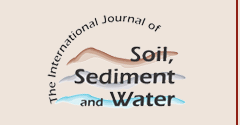Submission Guidelines
1. General Information: All manuscripts will be submitted online at https://scholarworks.umass.edu/intljssw/. You will need to create an account if you don't already have one. Once you have logged in, click on the Submit an Article link and follow the step by step directions for online submission.
Manuscripts are accepted with the understanding its submission for publication has been approved by all of the authors and by the institution where the work was carried out; further, that any person cited as a source of personal communications has approved such citation. Written authorization may be required at the Editor's discretion. Articles and any other materials represent the opinions of the authors and should not be construed to reflect the opinions of the Editors or the Publisher.
Please provide names and complete contact information (including email address) for three potential reviewers.
2. Preparation of Manuscripts: Manuscripts must be typewritten and single spaced. Manuscript should be formatted in Microsoft Word using 12 point Times New Roman. All pages should be consecutively numbered starting with the title page. Page set up should be for 8 1/2 x 11 (letter) size paper with 1 inch margins.
Use Microsoft Word Office (2003 or earlier, NO Office 2007 or VISTA) or save in a Rich Text Format (rtf).
Manuscript must include the following sections: title, running title, authors names, with affiliation and address, abstract (no more than 200 words), keywords (4-6 words), introduction, material and methods, results, discussion, conclusions and references. The corresponding author, with complete contact information, including email address, should be included at the bottom of the first page of the manuscript.
Format your manuscript according to the journal Formatting Guide. This is a separate instruction sheet posted on the journal and conference website. You can copy formatting from this document into your document using Format Painter in Microsoft Word.
Authors should write in clear, concise English. The responsibility for all aspects of the manuscript preparation rests with the authors. The Editor will not undertake extensive changes or rewriting of the manuscript. In some cases it may be a good idea to have a native English speaker help with the manuscript.
It is the responsibility of the author to obtain permission to use previously published material. Permission must be obtained from the original copyright owner, which in most cases is the publisher.
3. References: Follow the "Harvard" style for all references, listing the author(s) last names and the date in parentheses in the text. In the case of multiple authors (three or more), et al. should be used after following the first author. Journal titles should be abbreviated according to the Chemical Abstracts Service Source Index, 1985. The reference list should follow the text and begin on a separate page, be double-spaced, and alphabetized. Multiple references by one author or group of authors should be placed in chronological order: Use small letters (1988a, 1988b) for references published in the same year. Examples of both text usage and reference listing are as follows:
Examples of Reference Styles
A. Journal articles:
Appears in Text as: (Metcalf et al., 1971)
Appears in References as: Metcalf, R.L., Sangha, G.K., and Kapoor, I.P. 1971. Ecosystem for the evaluation of pesticide biomagnification. Environ. Sci. Technol. 5, 709–713.
B. Document:
Appears in Text as: (USEPA, 1983)
Appears in References as: USEPA (U.S. Environmental Protection Agency). 1983. Health Assessment Document for Acrylonitrile. Office of Health and Environmental Assessment, Washington, DC 20460. EPA-600/8-82-007F. Final Report, October 1983.
C. Chapter in an edited book:
Appears in Text as: (Helleiner, 1967)
Appears in References as: Helleiner, O. 1967. The population changes of Europe from the Black Death. In: The Cambridge Economic History of Europe, Volume 4, pp. 1–200. (Rich, E.E. and Wilson, C.H., Eds.). London and New York, Cambridge Univ. Press.
4. Tables: Tables should be used only when they can present information more effectively than running text. Care should be taken to avoid any arrangement that unduly increases the size of a table, and the column heads should be made as brief as possible, using abbreviations liberally. Lines of data should not be numbered unless those numbers are needed for reference in the text. Columns should not be used to contain only one or two entries, nor should the same entry be repeated numerous times consecutively. Tables should be created in MS Word rather than imported from another program and inserted into the text as close to the citation of the table as possible.
5. Figures and Graphs: Digital figures should be EPS or TIFF files saved at 300 DPI for halftones and 900DPI minimum–1200 DPI maximum for line art. There is no charge for color figures. Figures should be inserted into the text as close to the citation of the figure as possible.
6. Formulas and Equations: Particular care should be used in preparing manuscripts involving mathematical expressions. Italic or boldface type should be clearly indicated, and Greek or unusual characters should be written plainly or explained by annotations. Simple fractional expressions should be written with a slant line rather than in the usual manner, so that only a single line of type is required. Empirical and structural formulas and mathematical and chemical equations should be arranged to fill adequately the width of a single or double column. Subscripts and especially superscripts should be written with care and exponents should be set up in a single line. All signs such as + - = < > should be spaced, but the components of mathematical products should not be spaced. Organic structural formulas should be inserted into document for direct photographic reproduction. Do not use structures when a simple formula will suffice. Do not use multiple lines unnecessarily. It is important in avoiding errors that all formula matter be carefully arranged and executed with special attention to correctness of symbols, location of subscripts, superscripts, and electric charges, and the placing and close join-up of single and multiple bond lines.
